Sapphire and Moonstone Hunting in Sri Lanka
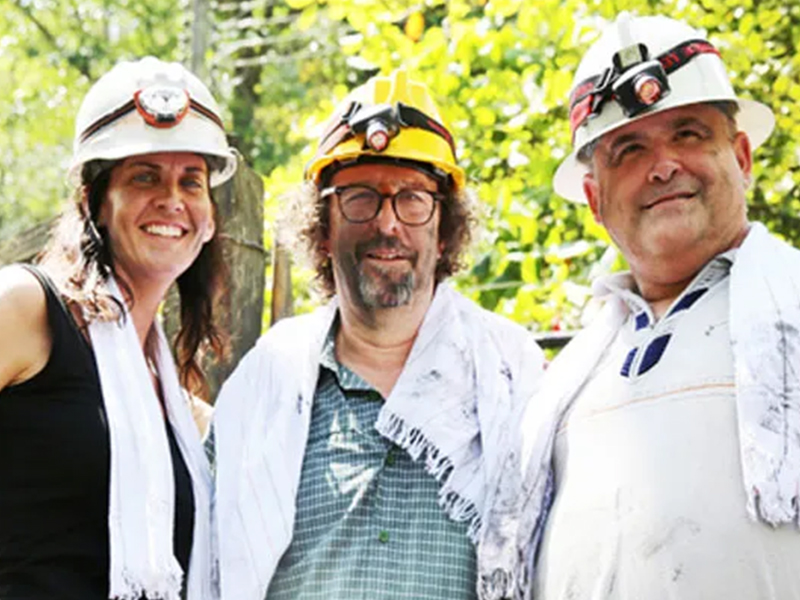
The Gem Hunters; Ron LeBlanc and his team of gem hunters travel to Sri Lanka in search of the world’s best sapphires and moonstones. Sri Lanka is the world’s oldest known source for the best quality sapphires and other gemstones.
5 Ultimate Secrets of Sapphire & Moonstone Hunting in Sri Lanka
The island of Sri Lanka, historically known as Ratna-Dweepa or “The Island of Gems,” holds a mystique that has captivated traders, adventurers, and royalty for centuries. Nestled within its lush, verdant landscapes lies a veritable treasure chest of precious stones, with the magnificent blue sapphire and the ethereal moonstone reigning supreme. For those with a spirit of adventure, the prospect of Sapphire and Moonstone hunting in Sri Lanka is not just a dream but a tangible, thrilling reality. This comprehensive guide will take you deep into the heart of Sri Lanka’s gem lands, uncovering the secrets, techniques, and rich history behind this fascinating pursuit. Whether you are a seasoned gemologist or a curious traveler, prepare to delve into an experience that connects you with the very earth that produces these magnificent jewels.
Table of Contents
- The Enduring Legacy of Gemstones in Ceylon: Why Sri Lanka?
- A Rich Tapestry of History and Geology
- The Modern Gem Authority
- Understanding the Prize: What Makes Sri Lankan Sapphires and Moonstones So Special?
- The Peerless Allure of the Ceylon Sapphire
- The Ethereal Glow of the Sri Lankan Moonstone
- The Epicenter of Sapphire and Moonstone Hunting in Sri Lanka: Key Locations to Explore
- Ratnapura: The Uncontested “City of Gems” for Sapphire Hunting
- Meetiyagoda: The Global Hub for Moonstone Hunting in Sri Lanka
- Other Noteworthy Gem-Bearing Areas
- The Process: A Deep Dive into Traditional Gem Hunting and Mining Techniques
- Unearthing Treasure: Traditional Pit Mining (Illam Mining) for Sapphires
- Descending into the Blue: Shaft Mining for Moonstones
- From Rough Stone to Radiant Gem: The Art of the Lapidarist
- Your Ultimate Guide to an Ethical Sapphire and Moonstone Hunting Experience in Sri Lanka
- Navigating Your Gem Adventure Responsibly
- Key Considerations for Ethical Sapphire and Moonstone Hunting in Sri Lanka
- Identifying, Valuing, and Acquiring Your Gem
- Beyond the Hunt: The Cultural and Economic Significance of Gems in Sri Lanka
- Gems in Folklore and Daily Life
- The Economic Bedrock of the Nation
- Frequently Asked Questions (FAQs) about Sapphire and Moonstone Hunting in Sri Lanka
- Conclusion: Your Journey into the Heart of Ratna-Dweepa Awaits
1. The Enduring Legacy of Gemstones in Ceylon: Why Sri Lanka?
Sri Lanka’s reputation as a gemological paradise is not a recent phenomenon; rather, it is a legacy etched into the annals of history. Ancient texts and chronicles from Greek, Roman, and Arab scholars allude to the island’s incredible wealth of gemstones. For instance, the legendary explorer Marco Polo, who visited in the 13th century, was astounded by the quality of rubies, sapphires, and other gems he witnessed. This enduring legacy is built on a foundation of unique geological conditions and a culture that has revered these natural wonders for millennia.
A Rich Tapestry of History and Geology
The island’s geology is the primary reason for its extraordinary gem deposits. A significant portion of Sri Lanka’s landmass is composed of Precambrian metamorphic rocks, which have undergone immense heat and pressure over millions of years. This intense geological activity created the perfect conditions for the formation of a wide array of minerals, including corundum (the family to which sapphires and rubies belong) and feldspar (the mineral responsible for moonstones).
Subsequently, weathering and erosion carried these gem-bearing rocks from the central highlands and deposited them in alluvial gravel beds found in low-lying areas, particularly in riverbeds and ancient floodplains. Consequently, most gem mining in Sri Lanka is alluvial, focusing on these secondary deposits, which are easier and safer to access than hard rock mining. This geological fortune has made the island one of the world’s most consistent producers of high-quality gemstones.
The Modern Gem Authority
Today, the industry is regulated by the National Gem and Jewellery Authority of Sri Lanka (NGJA), an institution dedicated to promoting and developing the sector while ensuring ethical practices. The NGJA oversees everything from mining licenses to export regulations, providing a framework that helps maintain the integrity and global reputation of Ceylon gems. This governance ensures that the tradition of gem mining continues to thrive in a manner that is both sustainable and beneficial to the local communities that have been the custodians of this craft for generations.
2. Understanding the Prize: What Makes Sri Lankan Sapphires and Moonstones So Special?
While Sri Lanka produces a diverse range of gemstones, including garnets, spinels, and zircons, it is the sapphire and the moonstone that have truly captured the world’s imagination. These two gems, though distinct in their composition and appearance, share a common trait: an unparalleled quality that sets them apart.
The Peerless Allure of the Ceylon Sapphire
The Ceylon Sapphire is arguably the most famous gemstone to emerge from Sri Lanka. It is renowned for its exceptional color, which is often described as a vibrant, medium-light “cornflower blue.” Unlike sapphires from other regions that can be overly dark or inky, the Ceylon Sapphire possesses a luminous quality that allows it to sparkle brilliantly even in low light. Moreover, Sri Lankan sapphires are celebrated for their remarkable clarity and often come in large sizes.
The most iconic example of a Ceylon Sapphire is undoubtedly the one at the center of the engagement ring first worn by Princess Diana and now by Catherine, Princess of Wales. This single gemstone catapulted the Ceylon Sapphire into global stardom, solidifying its status as a symbol of elegance and timeless beauty. Beyond the classic blue, Sri Lanka is also a source for the incredibly rare and valuable Padparadscha sapphire, a delicate pink-orange variety whose name is derived from the Sinhalese word for “lotus blossom.”
The Ethereal Glow of the Sri Lankan Moonstone
The Sri Lankan Moonstone is celebrated for a captivating optical phenomenon known as adularescence—a milky, bluish light that appears to billow across the gemstone’s surface, reminiscent of moonlight on water. While moonstones are found in several locations worldwide, those from Sri Lanka, particularly from the mines of Meetiyagoda, are prized for the intensity and purity of their blue sheen. This ethereal quality makes the moonstone a favorite for artisans and jewelry designers seeking a gem with a mystical, otherworldly charm. The delicate yet mesmerizing play of light within a high-quality Sri Lankan moonstone is a spectacle that needs to be seen to be believed.
3. The Epicenter of Sapphire and Moonstone Hunting in Sri Lanka: Key Locations to Explore
Embarking on a journey of Sapphire and Moonstone hunting in Sri Lanka requires knowing where to go. The gem deposits are concentrated in specific regions, each offering a unique window into the world of gem mining.
Ratnapura: The Uncontested “City of Gems” for Sapphire Hunting
No discussion of Sri Lankan gems is complete without mentioning Ratnapura. Its name literally translates to “City of Gems,” and it has been the undisputed capital of the country’s gem industry for centuries. Located in the Sabaragamuwa Province, the entire region is rich with alluvial deposits containing a spectacular variety of gemstones, most notably the blue sapphire.
A visit to Ratnapura offers an immersive experience. You can witness traditional pit mining in action, where miners work in challenging conditions to extract gem-bearing gravel (illam) from deep within the earth. Furthermore, the city’s gem markets, or “pelas,” are a hive of activity, where miners, dealers, and brokers converge to trade rough and cut stones. This is where you can truly feel the pulse of the industry and understand the journey of a sapphire from the muddy depths to a jeweler’s showcase.
Meetiyagoda: The Global Hub for Moonstone Hunting in Sri Lanka
If Ratnapura is the heart of the sapphire trade, then the small town of Meetiyagoda, located in the south near Hikkaduwa, is the soul of the moonstone world. This area is home to the only moonstone mines in Sri Lanka and is considered the best source for high-quality blue moonstones globally.
The mining here is primarily done through vertical shafts, some extending as deep as 100 feet. Visitors to Meetiyagoda can take guided tours of these mines, providing a safe yet fascinating glimpse into the underground world of the miners. These tours often conclude with a visit to a workshop where you can see the rough stones being cut and polished, showcasing the transformation that unlocks the moonstone’s signature adularescence.
Other Noteworthy Gem-Bearing Areas
While Ratnapura and Meetiyagoda are the primary destinations, other areas also contribute to Sri Lanka’s gem wealth. The region around Elahera is another significant source of sapphires and other gems. Similarly, areas like Balangoda, Rakwana, and Okkampitiya are known for their rich deposits, each with local communities deeply intertwined with the gem trade. Exploring these lesser-known regions can offer a more rustic and authentic perspective on the island’s gem culture.
4. The Process: A Deep Dive into Traditional Gem Hunting and Mining Techniques
The methods used for Sapphire and Moonstone hunting in Sri Lanka have remained remarkably consistent over the centuries, relying on manual labor, traditional knowledge, and a deep respect for the land.
Unearthing Treasure: Traditional Pit Mining (Illam Mining) for Sapphires
The most common method for sapphire mining in Ratnapura is pit mining. The process begins with miners digging a vertical shaft, often several meters deep, to reach the gem-bearing gravel layer. This illam is then excavated and brought to the surface in baskets.
The crucial next step is washing the gravel. This is done using a large, cone-shaped basket called a “doolana.” The miner stands in a nearby stream or pond, skillfully swirling the gravel-filled basket in the water. This action washes away the lighter mud and sand, leaving the heavier, gem-bearing minerals at the bottom. Finally, the concentrated gravel is spread out on a mat, and the miners, with their expertly trained eyes, carefully sort through it to pick out the rough gemstones. It is a laborious but time-honored technique that yields incredible results.
Descending into the Blue: Shaft Mining for Moonstones
In Meetiyagoda, the moonstone-bearing feldspar veins are located deeper underground, necessitating shaft mining. Miners descend into narrow, timber-reinforced shafts to excavate the rock. The work is physically demanding and requires a sophisticated understanding of the local geology to follow the veins. Once brought to the surface, the rock is carefully broken apart to reveal the moonstone rough within. This method is a testament to the miners’ courage and expertise.
From Rough Stone to Radiant Gem: The Art of the Lapidarist
Finding a rough gem is only half the battle. Its true beauty is unlocked by a skilled lapidarist. Sri Lankan gem cutters are renowned for their craft, often using traditional techniques passed down through generations. They possess an innate ability to “read” a rough stone, determining the best orientation to maximize its color, clarity, and brilliance while minimizing weight loss. The transformation of a dull, opaque-looking stone into a sparkling, faceted gem is a form of artistry that adds immense value and is an integral part of Sri Lanka’s gem industry.
5. Your Ultimate Guide to an Ethical Sapphire and Moonstone Hunting Experience in Sri Lanka
For travelers, participating in a gem hunting experience can be a highlight of their trip. However, it is crucial to approach it with awareness and a commitment to ethical practices.
Navigating Your Gem Adventure Responsibly
The allure of finding your own gemstone is powerful, but it’s important to distinguish between authentic experiences and manufactured tourist traps. Many places offer “gem washing” activities, but these are often seeded with low-quality or synthetic stones. A truly authentic experience involves visiting a licensed, operational mine where you can observe the genuine process. While you are unlikely to be allowed to mine yourself due to safety regulations, witnessing the process firsthand is an unforgettable education.
Key Considerations for Ethical Sapphire and Moonstone Hunting in Sri Lanka
- Choose Licensed Operators: Always engage with tour guides and mine operators who are licensed by the National Gem and Jewellery Authority. This ensures they adhere to safety and environmental regulations.
- Support Fair Labor Practices: The work of a gem miner is arduous. Patronize operations that are known for treating their workers fairly and providing safe working conditions.
- Understand Environmental Impact: Traditional mining in Sri Lanka is generally small-scale and has a lower environmental impact than large industrial operations. However, regulations require miners to refill pits after they are exhausted to restore the land. Support operations that demonstrate this environmental responsibility.
- Buy from Reputable Sources: When purchasing gems, do so from established dealers or certified sources. Avoid street vendors, as the risk of encountering synthetic or treated stones is high.
Identifying, Valuing, and Acquiring Your Gem
Identifying rough gems requires a trained eye. Sapphires in their rough form often look like glassy, hexagonal pebbles, while rough moonstones are embedded in their host rock. For any significant purchase, insist on a gemological certificate from a reputable lab. The Gemological Institute of America (GIA) is the global authority, but local labs recognized by the NGJA also provide reliable certification.
For those looking to acquire a piece of Sri Lanka’s treasure without the uncertainty of a market purchase, reputable retailers offer a curated selection of certified gems. At Prestige Gems Store, we pride ourselves on providing ethically sourced, fully certified Ceylon sapphires and moonstones, ensuring you receive a genuine and valuable piece of this island’s natural heritage.
6. Beyond the Hunt: The Cultural and Economic Significance of Gems in Sri Lanka
Gems are more than just a commodity in Sri Lanka; they are woven into the very fabric of its culture and economy.
Gems in Folklore and Daily Life
In Sri Lankan culture, gemstones are believed to possess protective and astrological powers. The “navaratna,” or nine gems, are often worn in jewelry to bring good fortune and ward off negative influences. This deep-seated belief system underscores the cultural reverence for these stones, elevating them beyond mere ornamentation.
The Economic Bedrock of the Nation
The gem industry is a vital component of the Sri Lankan economy, providing livelihoods for hundreds of thousands of people, from miners and cutters to dealers and jewelers. It is a significant source of foreign exchange and has positioned Sri Lanka as a global leader in the colored gemstone market. The industry is predominantly driven by small and medium-sized enterprises, making it a powerful engine for grassroots economic development.
7. Frequently Asked Questions (FAQs) about Sapphire and Moonstone Hunting in Sri Lanka
1. Can tourists really find gems during a sapphire and moonstone hunting tour in Sri Lanka? While it is rare for a tourist to find a high-value gem themselves, participating in the “washing” process at a real mine is possible and offers a slim chance of finding small stones like zircons or garnets. The main value is the educational and cultural experience of witnessing the authentic process of Sapphire and Moonstone hunting in Sri Lanka.
2. What is the best time of year for sapphire and moonstone hunting in Sri Lanka? Mining activity is most robust during the dry seasons, from December to March and May to September. Heavy rains during the monsoon seasons can flood the mines, making work impossible. Therefore, planning your visit during the drier months is advisable for the best experience.
3. How do I know if a sapphire I buy in Sri Lanka is real? The only certain way is to buy from a reputable dealer who provides a certificate from a recognized gemological laboratory. Look for the NGJA seal of approval. Key indicators of a natural sapphire include minor imperfections (inclusions), whereas synthetic stones are often flawless.
4. Are there ethical concerns with sapphire and moonstone hunting in Sri Lanka? Like any mining industry, there are potential concerns. However, Sri Lanka’s industry is largely composed of small-scale, traditional operations rather than large, destructive corporations. By supporting licensed and reputable businesses, you contribute to a system that prioritizes fair labor and environmental responsibility.
5. What other gemstones can be found while hunting for sapphires and moonstones in Sri Lanka? The alluvial gravels of Sri Lanka are incredibly diverse. Alongside sapphires, you can find a wide variety of gems, including ruby, chrysoberyl (including cat’s eye and alexandrite), spinel, garnet, tourmaline, and zircon. This rich diversity is why the island is truly called “The Island of Gems.”
8. Conclusion: Your Journey into the Heart of Ratna-Dweepa Awaits
The experience of Sapphire and Moonstone hunting in Sri Lanka offers a profound connection to the earth, to a rich history, and to a culture that has cherished these natural treasures for countless generations. It is an adventure that takes you from the bustling gem markets of Ratnapura to the subterranean world of the Meetiyagoda mines, revealing the incredible journey of a gemstone from deep within the earth to its place of honor in a piece of fine jewelry.
This journey is a testament to perseverance, skill, and a touch of serendipity. Whether you are an aspiring gem hunter, a passionate collector, or simply a traveler in search of a unique experience, the gem fields of Sri Lanka promise an unforgettable adventure. We invite you to explore this magical world and discover the timeless allure of Ceylon’s most precious gifts.


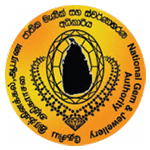

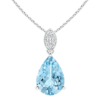




 Ladies Rings
Ladies Rings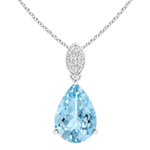 Pendants
Pendants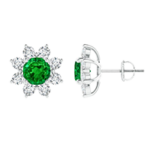 Earrings
Earrings Gent’s rings
Gent’s rings